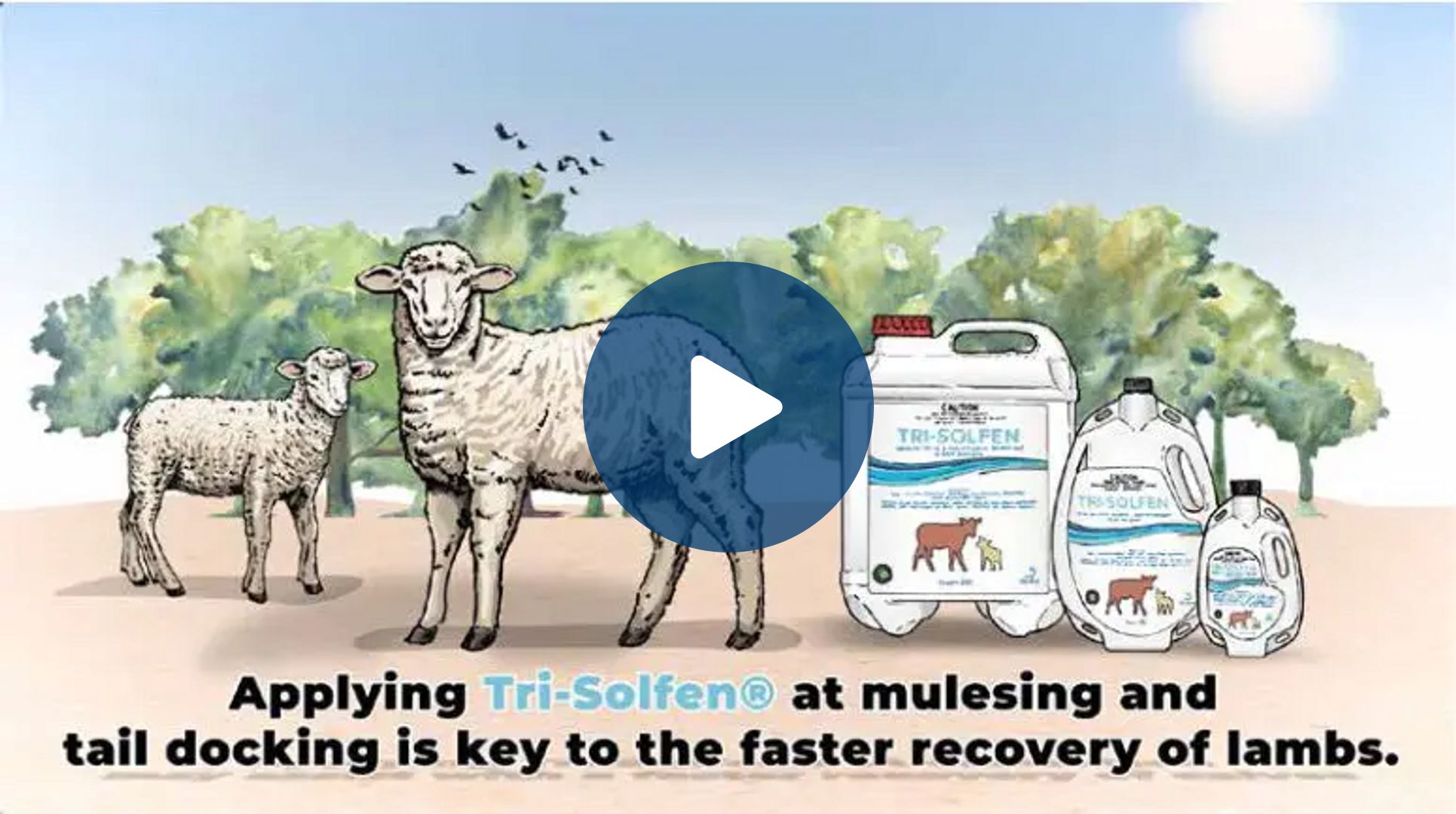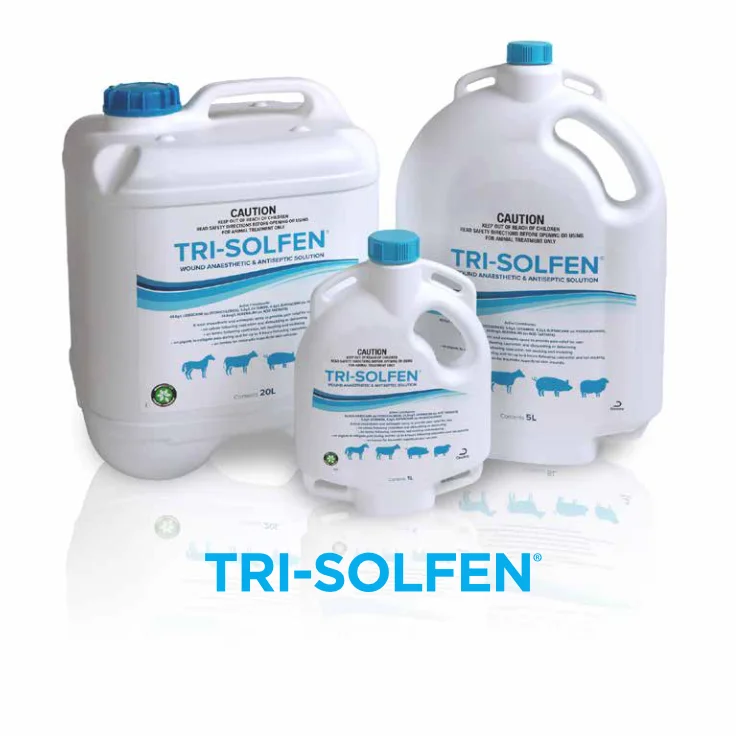Best practice pain relief programs for lambs during surgical procedures
Best practice guidelines recommend the provision of both acute and chronic pain relief (i.e. multi-modal programs) during animal husbandry procedures.1 For surgical procedures in lambs (e.g. mulesing, docking or castration), this should involve the administration of a local anaesthetic (e.g. Tri-Solfen®) to manage short-term acute pain and an analgesic (e.g. a buccal or injectable meloxicam formulation) to manage longer-term chronic pain. These products are readily available from rural suppliers and veterinarians.
ACUTE PAIN RELIEF
Tri-Solfen®
(surgical castration, tail docking
and/or mulesing)
CHRONIC PAIN RELIEF
Non-steroidal
anti-inflammatory drugs
(e.g. meloxicam)
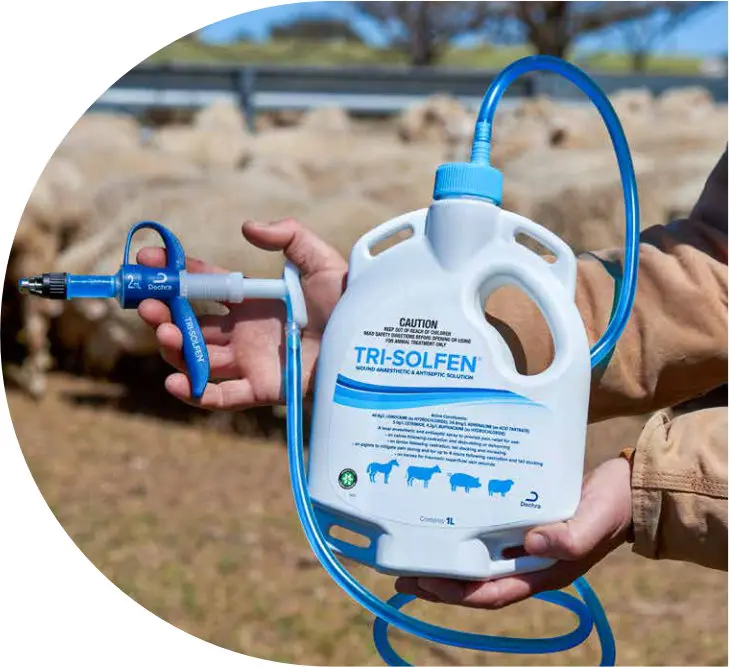
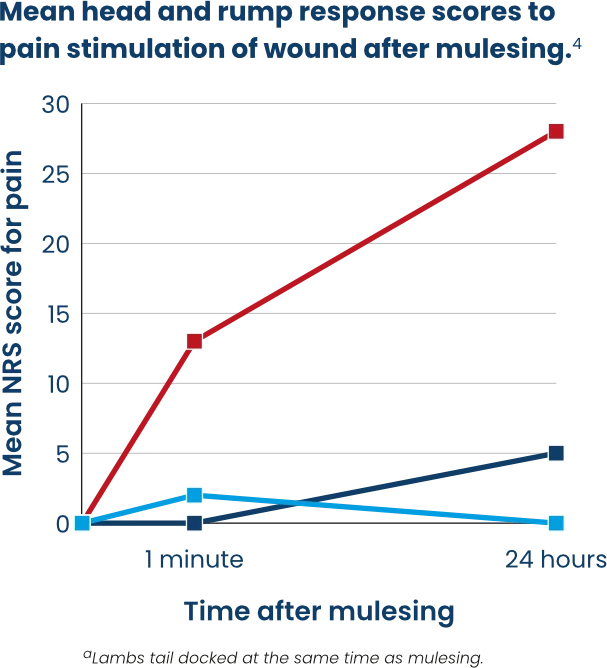
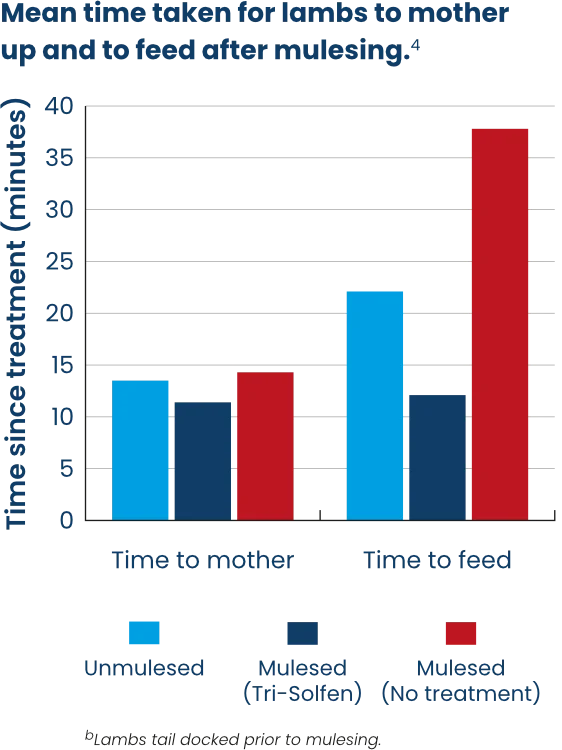
The first choice for acute pain reliefduring surgical procedures
Tri-Solfen® is the first choice for acute and lasting pain relief (up to 24 hours) following surgical procedures in lambs. This unique formulation provides immediate and lasting pain relief, reduces bleeding, protects against infection and facilitates wound healing. Clinical studies have confirmed Tri-Solfen® provides rapid pain relief in lambs following mulesing, docking and castration.2-5
Four-in-one pain relief and wound care
Tri-Solfen contains four active ingredients:
- Lignocaine and bupivacaine, which block the nerve signals from damaged tissue that are responsible for the sensation of pain and reduce the animal’s pain response. Lignocaine provides immediate (within 60 seconds) pain relief on surgical wounds. Bupivacaine provides longer-acting (up to 24 hours) pain relief on surgical wounds.
- Adrenaline, which reduces bleeding and slows the ‘inflammatory cascade’.4 Adrenaline constricts blood vessels that have been cut during surgery, reducing blood loss and the risks associated with increased stress and shock to the animal. Reducing blood flow to surgical wounds means nerve endings are not exposed to inflammatory compounds that would normally sensitise them. Adrenaline also reduces the rate of systemic absorption of lignocaine and bupivacaine, prolonging their anaesthetic effect.4
- Cetrimide, an antiseptic and surfactant that helps to start the healing process and protect against infection. The gel formulation helps to seal and protect the wound for improved wound healing.
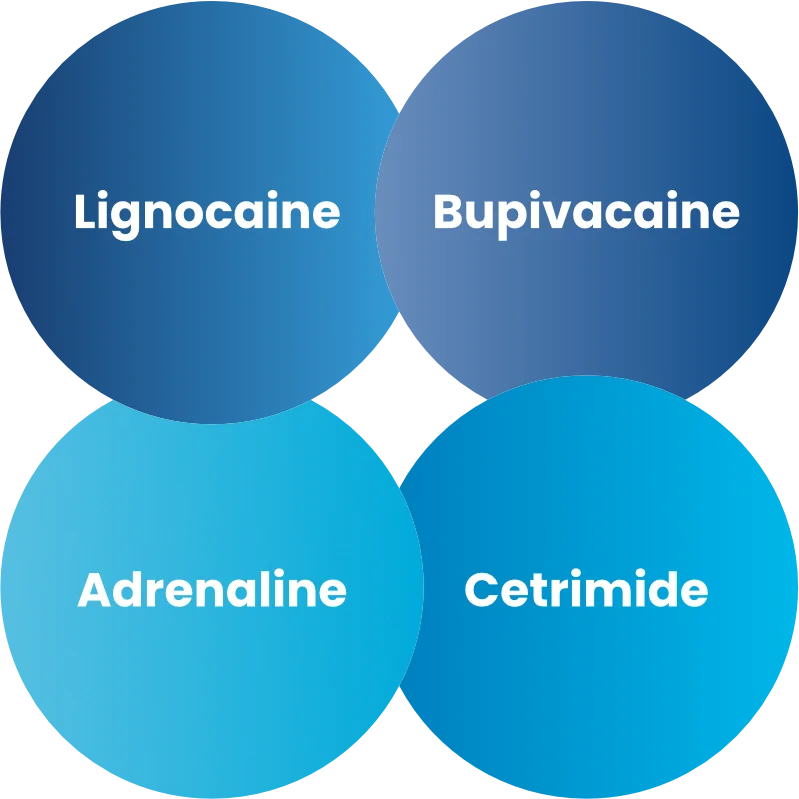
Application guidelines
- Always read and follow the label directions
- Disinfect surgical equipment before use
- Determine the correct dose rate for each procedure and liveweight
- Apply using the Tri-Solfen® applicator fitted with a spray tip (mulesing and docking) or castration nozzle (castration)
- Pull the trigger firmly and quickly to generate the gelling foam
Apply the product evenly over the complete area of the wound Always read and follow the label directions.
